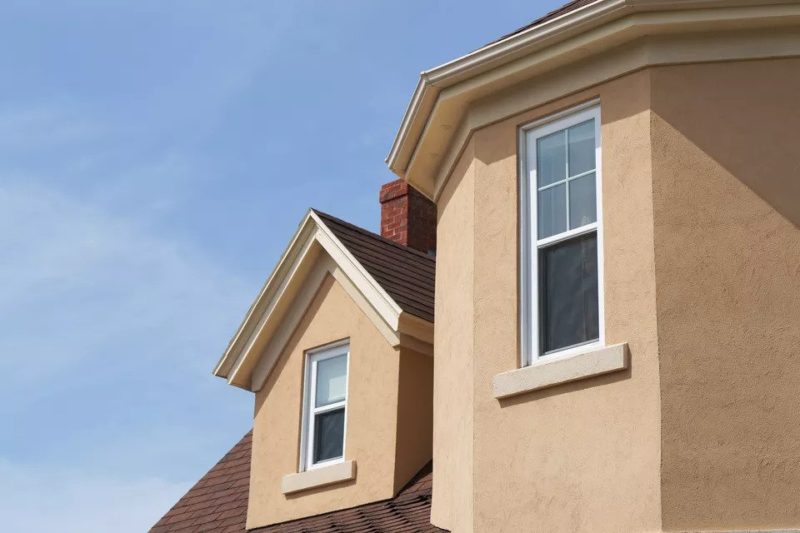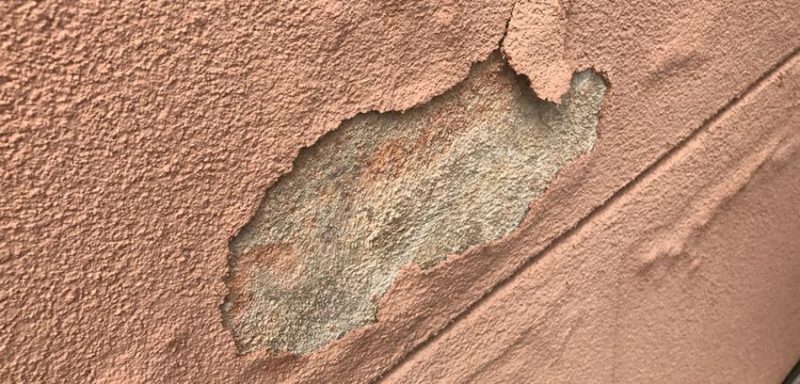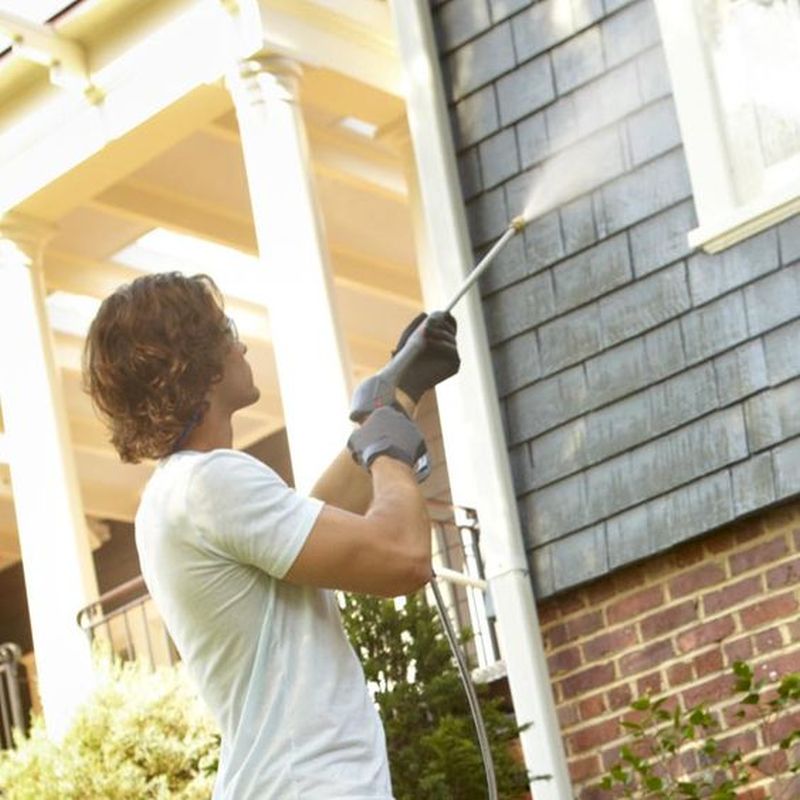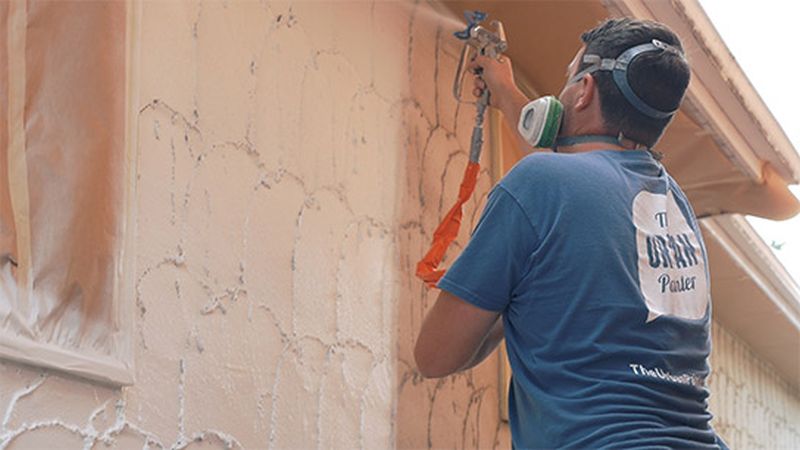Stucco has been used on New England homes since the 1800s. This material can be comprised of many different ingredients; from course ingredients like horsehair to ingredients like sand that leave a smoother finish. Depending on the look you’re going for, stucco can be blended to create a variety of textures.
Because of the range of textures, repainting stucco can be challenging. Patches, if done incorrectly, will stand out from the surrounding area. Repairs must blend in precisely with the original texture of the stucco, and this often requires professional expertise.
Repainting textured surfaces can be difficult as well. The texture itself makes it hard to achieve even coverage. Paint needs to be applied carefully to fill every crevice and maintain the rough or uneven surfaces.
According to BestofMachinery, painting the exterior of your home can be much more difficult than an internal painting job. For this reason, choosing paints that can resist a wide range of different weather conditions and different types of damage is important.

For a treasured historical home, like those found in Wellesley, MA, maintaining the exterior integrity of the home is a priority. Preserving or restoring historic homes, bringing back to life their original appearance is more complicated with textured surfaces like stucco.
If you need to mend or touch up the stucco on your home, here are 6 tips to help you achieve the best results:
Work with Professionals

Working with a professional to patch-up and restore stucco is the best way to ensure that the job is done properly. Completing a project like this without years of experience is nearly impossible to do flawlessly.
Not only will inexperienced individuals lack the knowledge of tools and paints, but they will also have a harder time matching the texture of the stucco in the areas that need repair. Experienced professionals will have a thorough understanding of which materials create which textures so as to create seamless repairs.
Stucco has been used in New England homes for centuries. Choose a house painting company, like Catchlight Painting, that specializes in historic homes and is qualified to get the job done right. Experienced professional painters will save you a lot of time and frustration when taking on a project like this.
Learn About the Materials in Stucco

As previously mentioned, the surface of stucco will have a different texture depending on which materials are in the stucco. To create flawless, unnoticeable patches, the repair material needs to either incorporate that material or mimic it exactly.
Before beginning any repairs, do some research or get a professional opinion about the stucco on your home. It will be easier to choose the material that will be selected to patch cracks and other flaws.
In addition, check the paint and stucco for lead. If lead is present, professionals should be hired to ensure that the materials and repairs are safely handled.
Allow Time for Repairs to Cure

Stucco repairs need time to cure and harden. If you wash or paint over new stucco too soon, the pH imbalances of the still-curing material will cause several issues: both to the integrity of the patch and to the quality of the paint job.
If the stucco has not properly dried and hardened, it can become brittle. The paint over the stucco may also crack to allow moisture out as the stucco continues to dry, or it may hold the moisture in deposits which will cause the paint to separate from the wall.
Another important step of the curing process is achieving the proper pH balance. When first applied, stucco has a high pH level. As it cures, it transitions to a more neutral pH. If the paint is applied while the pH level is too high, it can affect the color and finish of the paint.
Power Wash

After all cracks and problem areas have been repaired and given the proper time to set, the surface should be properly cleaned. Cleaning the surface before repainting will help the paint stick and last longer. This step will also eliminate any materials that could result in imperfections in the dried paint, like dirt, dust, or grass.
Power washing is the best method for cleaning stucco because it will effectively remove debris from all crevices. This must be done after repairs are made so that damaged areas are not ruined, and water doesn’t seep through cracks.
Cover Areas not Being Painted
As with any paint job, you need to protect the areas of your house that will not be painted. Cover windows, frames, doors, downspouts, trims, and fixtures that you want protected. Use plastic drop cloths and painters’ tape to quickly and easily cover these areas.
Because painting stucco is typically done with a sprayer, you will have less control over the paint. Prevent any paint splatters or drips by taking extra precautions and cover every surface that will not be painted.
Repaint With a Sprayer

As mentioned in the previous step, stucco is usually painted with a sprayer. The textured surface makes it difficult to get even coverage with rollers and brushes. Sprayers will effortlessly cover the entire area, even with the most textured stucco surfaces.
Using a sprayer instead of a roller will save you time and the cost of materials. If you’re hiring a professional, they will likely use a sprayer. If you’re doing this project yourself, you can simply rent paint sprayers from most home-improvement stores. If you’ve never used a sprayer before, be sure research techniques like back-rolling to get rid of the lines that sprayers create. This will improve the finished look of the fresh paint.
Repairing and repainting stucco requires some experience and skill. You can aspire to complete this project on your own but hiring a professional will yield better results.
Homes in Wellesley, MA are cherished for their historic, authentic styles. Protect that investment by following these guidelines. In doing so, you can ensure that your stucco repair or repaint will yield the best results possible.


